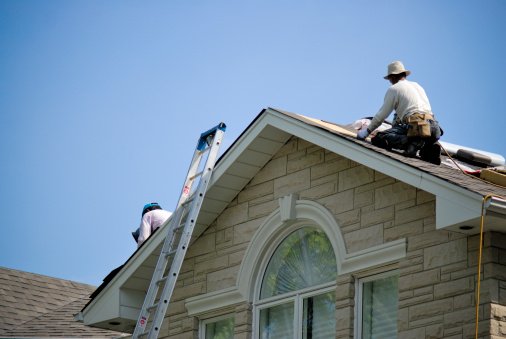Introduction: Finding Tranquility Under Your Roof
Home is a place of comfort and relaxation, a sanctuary where you can unwind and escape from the outside world. However, external noise can often disrupt the tranquility inside your home, causing unwanted disturbances. The roofing of your house plays a significant role in noise reduction and creating a quieter living space. In this article, Ainger Roofing, a roofing contractor in Barrie, Ontario will explore the relationship between roofing and noise reduction, offering insights into effective solutions and materials to help you enjoy a peaceful and serene home environment.

Understanding Noise Transmission through Roofing
Noise transmission through the roof can be a common issue, especially if your home is located in a busy area or near sources of noise, such as traffic, airports, or industrial zones. The primary ways noise enters your home through the roof are:
- Impact Noise: Caused by objects, such as raindrops, hail, or falling debris, striking the roof surface.
- Airborne Noise: Sound waves traveling through the air and vibrating the roof materials.
- Structure-Borne Noise: Vibrations from adjacent structures, such as neighboring buildings or HVAC systems, transmitted through the roof.
Roofing Solutions for Noise Reduction
1. Soundproof Underlayment
Installing a soundproof underlayment beneath your roofing materials can significantly reduce impact noise. These specialized materials dampen the sound of raindrops, hail, and other impacts, creating a quieter indoor environment.
2. High-Quality Insulation
Proper roof insulation not only enhances energy efficiency but also serves as a barrier against airborne noise. Insulation materials with high sound absorption qualities can help minimize external noises from penetrating your home.
3. Mass-Loaded Vinyl (MLV)
Mass-loaded vinyl is a heavy, flexible material that acts as a sound barrier. When installed under the roofing, it can effectively block airborne and impact noise, creating a quieter living space.
4. Seal Roofing Penetrations
Ensure all roof penetrations, such as vents, chimneys, and skylights, are properly sealed to prevent sound leaks. Gaps and cracks can allow noise to enter your home and disrupt its tranquility.
Quieter Roofing Materials
1. Metal Roofing
Metal roofing can provide excellent noise reduction due to its solid construction. It effectively dampens impact noise, making it a popular choice for homeowners seeking a quieter roofing option.
2. Clay or Concrete Tiles
Clay or concrete tiles are dense and robust materials that naturally block out external noise. Their weight and composition help minimize impact and airborne noise, contributing to a quieter home.
3. Asphalt Shingles with Soundproof Underlayment
Asphalt shingles, when paired with a soundproof underlayment, offer effective noise reduction benefits. The underlayment enhances the shingles’ impact noise resistance, providing a quieter living space.
Other Noise-Reducing Roofing Techniques
1. Green Roofing
A green roof, covered with vegetation, can act as a natural sound insulator, absorbing and reducing external noise while providing additional environmental benefits.
2. Roof Shape and Design
The shape and design of your roof can influence noise transmission. A gable roof, for instance, may perform better at reducing noise compared to a flat roof due to its sloping design.
FAQs
- Can roofing completely eliminate external noise? While roofing solutions can significantly reduce external noise, complete elimination may not be achievable. However, proper roofing techniques can create a much quieter indoor environment.
- Do noise-reducing roofing materials cost more than traditional options? Noise-reducing roofing materials, such as metal or tile, may have a slightly higher upfront cost. However, the benefits they offer in terms of noise reduction and durability can make them a worthwhile investment.
- Can I install soundproofing materials under an existing roof? Depending on the type of roof and its condition, it may be possible to retrofit soundproofing materials underneath the existing roofing. Consulting a professional is recommended for the best approach.
- Will a green roof require more maintenance than a traditional roof? Green roofs do require some additional maintenance, such as watering and plant care. However, they can also extend the lifespan of your roof and provide other environmental advantages.
Conclusion: Embracing Tranquility from Above
A quieter home is within your reach with the right roofing solutions and materials. Ainger Roofing, a roofing contractor, says by understanding noise transmission and implementing effective noise reduction techniques, you can create a peaceful and serene living environment under your roof. Invest in the right roofing materials and soundproofing solutions to embrace tranquility from above and enjoy the comforts of home without the unwanted noise disruptions.

